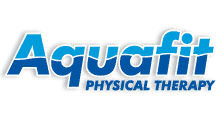Billing
Refer to Major Medical Insurances Accepted on the Our Policies/Billing page.
Yes, you will need a referral from your physician to receive physical therapy. This referral will enable your insurance company to cover your treatment.
Yes. There is a self-pay schedule in place to allow this type of service. Please call the office with further questions.
This document is a letter that assists in communicating with the referring physician. Once the initial evaluation is completed by your physical therapist a POC is generated from the information gathered. The POC is then sent directly to the physician and a copy is placed in your file.
Scheduling
Physical Therapy
A strain is related to a muscle injury; meaning the muscle has been overworked or stressed. A ligament injury will result in a sprain.
Tendons connect muscles to bones while ligaments connect bone to bone.
When a tendon becomes injured from micro-trauma or a specific injury, pain and swelling are usually the end result. This inflammatory process is referred to as tendonitis.
Muscles are comprised of small fibers that glide over one another to create a contraction. These small fibers can become injured, resulting in a production of inflammation. With the inflammation present the micro-fibers of the muscle become entangled; this is commonly referred to as a muscle spasm.
Aquatic pools are used for many injuries. Examples include joint replacements, ligament surgery, sprain or strain. Other conditions that will benefit from Aquatics are: spinal pain/surgery or any neurological/orthopedic condition affecting walking/balance skills.
Spine
If you can tolerate lying on your back then you should try this position. Also using rolled towels under your neck and low back to further support your spine through the night.
To best lift an object from the floor or a chair you’ll want to bend at your hips and knees; using the strength in your legs to stand up, while keeping your back as straight as possible. Kneel on one knee or stagger your feet if space permits and pull the object as close to your body as possible before lifting.
Upper Extremity
The rotator cuff is a group of four muscles that support the shoulder and scapula. They are the prime movers of the humerus, or upper arm bone, into rotation. Another prime function of the rotator cuff muscles are to ‘drop the humerus down’ in the joint and allow abduction; the arm movement laterally away from the body. The four muscles are: Subscapularis, Supraspinatus, Infraspinatus and Teres Minor.
The elbow has a medial and lateral component. This is what makes the difference in wrist flexors and extensors. The lateral epicondyle; outside part of the elbow, is the location of wrist extensors. These muscles help to raise the wrist back toward you. Any tendon irritation at this site is referred to as lateral epicondylitis, or tennis elbow. The medial epicondyle; inside part of the elbow, is the location of wrist flexors. These muscles help to lower the wrist down. Any tendon irritation at this site is referred to as medial epicondylitis, or golfer’s elbow.
The bones, ligaments and muscles of the wrist are situated in such a way that a tunnel is created for the tendons and nerves of the forearm muscles. It is when the nerves becomes entrapped or compressed that signs and symptoms turn into Carpal Tunnel Syndrome (CTS). When structures such as tendons and nerves are compressed inflammation becomes apparent. This inflammation is the usual cause of developing CTS.
Lower Extremity
Often, as individuals’ age, degenerative changes take place in the bones of this joint. It is usually a break-down of the bone surfaces. The thin layer of cartilage wears down and the bones become irritated. The hip is subjected to large mechanical forces and the presence of any bone or joint defect may contribute to further degenerative changes and ultimately… pain.
Over time with activity and age factors, the knee can wear down. Small amounts of wear and tear will become noticeable; beginning with mild arthritis and as pressures continue in the joint, further injury to the bone may take place. When the bone becomes more involved the pain usually increases. It is when the pain becomes function limiting and also less bearable during daily activities that a surgery may be necessary.
